Helping Hydroponic Farmers, ITS Abmas KKN Team Designs Solar Energy-Based Tools
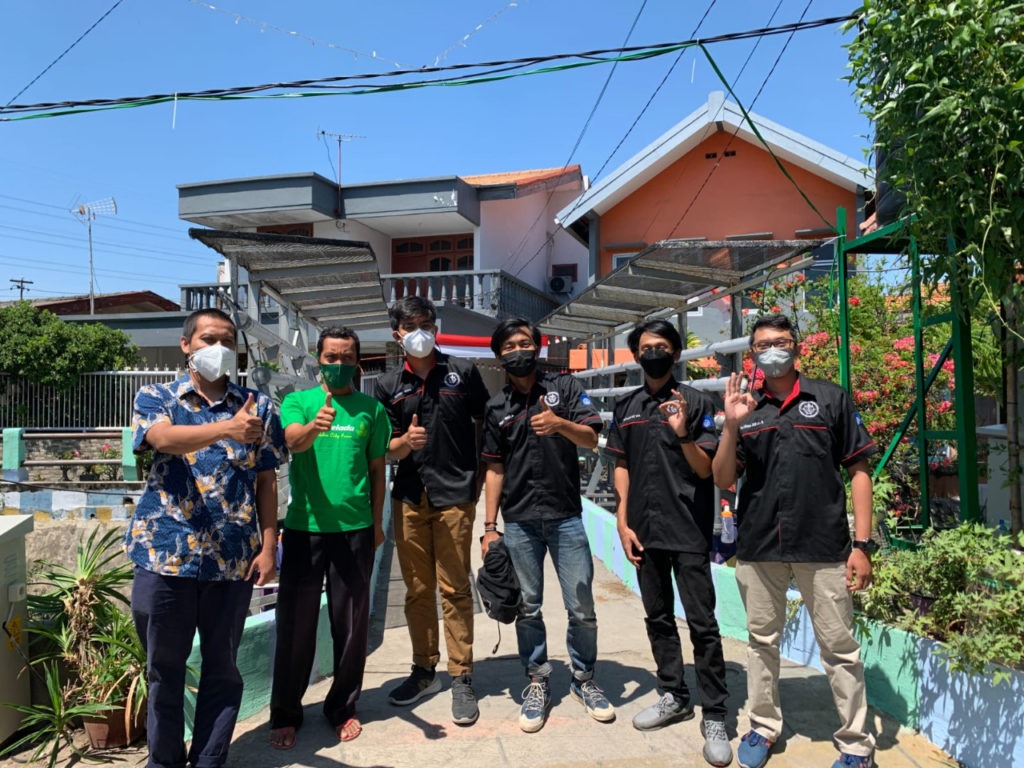
ITS Abmas KKN team after donating equipment to Simomulyo Hydroponic Village, Surabaya
Campus ITS, ITS News – Limited land and waste of electricity due to irrigation are crucial problems that are often felt by hydroponic farmers, as happened in Simomulyo Hydroponic Village, Surabaya. Responding to this problem, the Team for the Real Work Lecture and Community Service (KKN Abmas) of the Institut Teknologi Sepuluh November (ITS) designed a tool called Automatic Solar Hydroponics which is based on solar energy with nutrient and pH control.
Geraldy Rizko Adhira Putra, one of the team members, revealed that from the survey carried out, Simomulyo Hydroponic Village, Sukamanunggal District, Surabaya was still using manual irrigation. In addition, checking the pH of the water regularly and providing conventional nutrition causes the quality of vegetables to be not optimal and requires high operational costs.
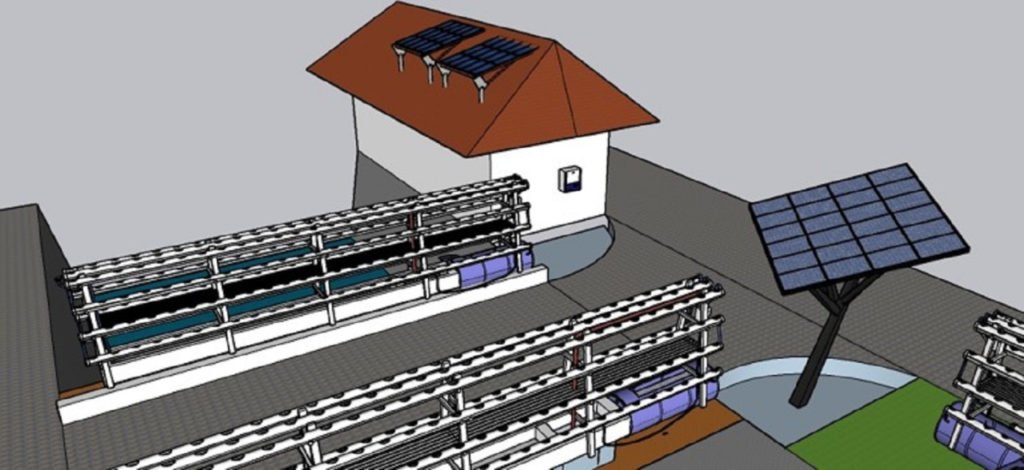
Automatic Solar Hydroponics Design by the ITS KKN Abmas Team
Not wanting this to continue, the ITS team reconsidered what equipment should be redesigned so that hydroponic land use could be more effective and efficient. “At that time, we saw that solar cells have the potential to produce modern technology with good competence, so the Automatic Solar Hydroponics was designed,” said Geraldy.
Unlike other energy sources, he added, solar cells are non-linear energy sources. The power generated will depend on the irradiation and ambient temperature, so it is necessary to have a method so that the solar cells work at their maximum point to maximize the power generated. This method is this commonly referred to as Maximum Power Point Tracking (MPPT).
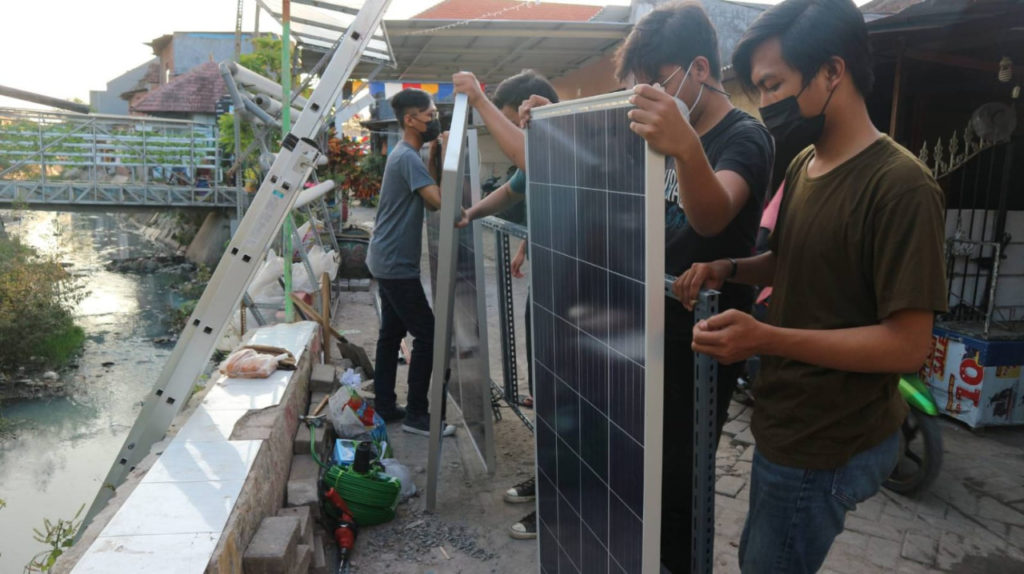
The process of assembling the Automatic Solar Hydroponics tool designed by the ITS KKN Abmas team
The student born in Malang, April 29, 2000, added that this device is equipped with a battery, Arduino, solar panels, and Solar Charge Controller (SCC). In addition, there is also a timer system that functions to set the pump start time. As a result, the pump does not get hot quickly, and its service life becomes longer. “Most importantly, this system can also reduce the use of excess electrical energy sources,” he explained.
Other systems in this pump include pH and nutrition sensors. This sensor functions to command the tool so that it can supply nutrients and pH to hydroponic plants. In this system, the pump functions as a tool to drain water into pipes containing hydroponic plants. Furthermore, the flow will be returned to an extensive reservoir.
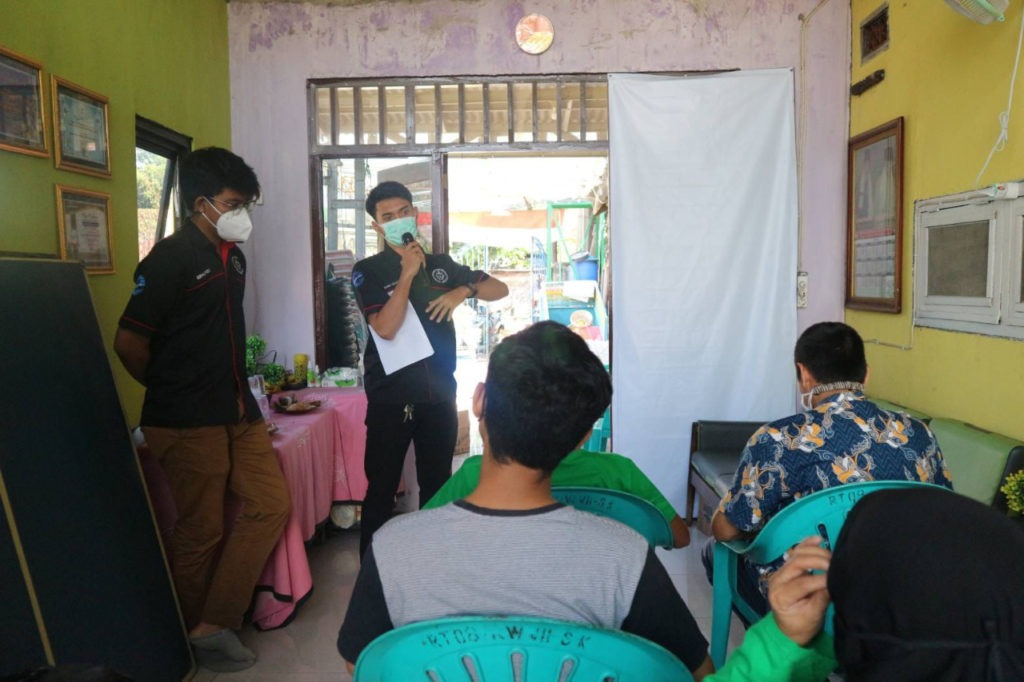
Demo activity for Automatic Solar Hydroponics by the ITS KKN Abmas team to residents
Not to be left behind, Standard Operating Procedures (SOP) were also implemented so that Automatic Solar Hydroponics can be used safely, the life of the equipment becomes more durable, and work accidents do not occur when using the tool. “We are grateful that finally Automatic Solar Hydroponics was successfully inaugurated and given to Simomulyo residents on August 12,” said Geraldy.
After the demonstration and the donation of equipment, according to Geraldy, the response from residents was very positive. People’s enthusiasm is very high for this tool. “Because so far they have worked manually, but now it can be done automatically and modernly,” he said.
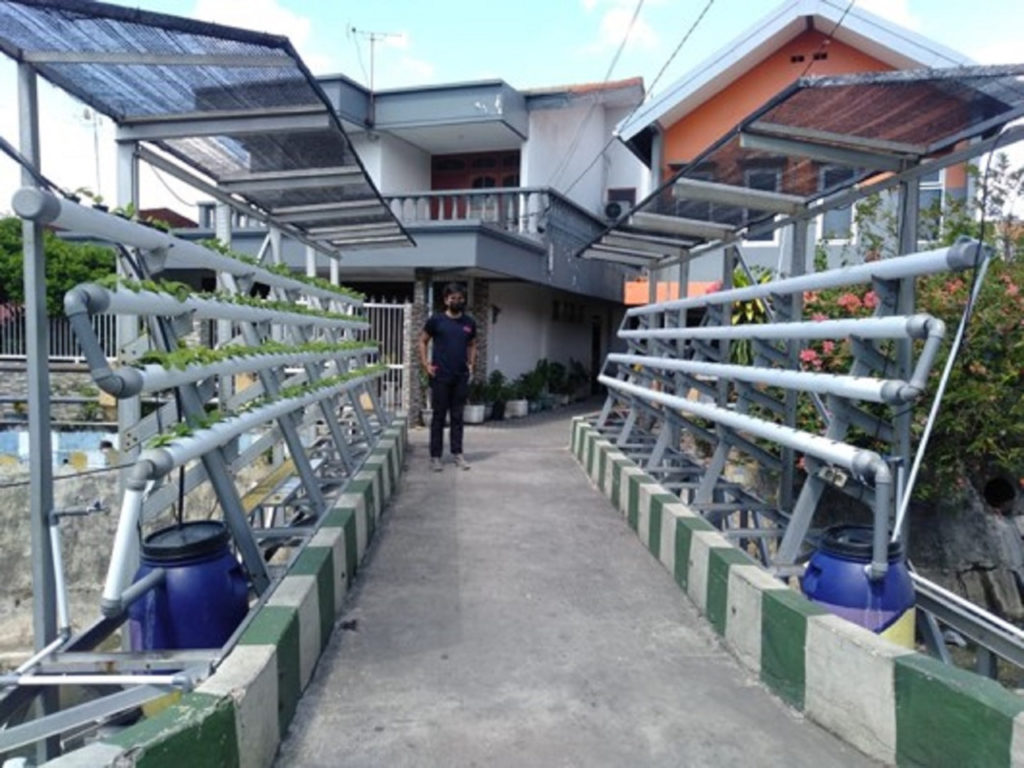
KKN Abmas ITS team survey activities to Simomulyo Hydroponic Village, Sukomanunggal District, Surabaya
Under the guidance of a lecturer from the Department of Electrical Engineering, Feby Agung Pamuji ST MT Ph.D., this Abmas KKN activity was completed within four months. As of April 2021, their team has been actively assembling tools offline. “But since the PPKM (Enforcement of Community Activity Restrictions), we agreed to divide everyone’s tasks to do in their respective homes,” recalled the student from the Electrical Engineering Department.
At the end of the conversation, Geraldy hopes that hydroponic farmers are inspired by this innovation so that they want to develop renewable energy-based equipment in their area. “In the future, hopefully, this tool will not only be useful in helping the productivity of the Simomulyo Hydroponic Village harvest, but also for all Indonesian people,” he concluded hopefully. (ITS Public Relation)
Reporter: Erchi Ad’ha Loyensya
Related News
-
Anticipating Lost Pet Dogs, ITS Students Invent a Tracking Bag
ITS Campus, ITS News —Losing a pet is a sad thing for its owners. To anticipate this, a team
August 20, 2021 17:08 -
ITS Students Integrate Smart City Service Features Through Visionaries
ITS Campus, ITS News — Institut Teknologi Sepuluh Nopember (ITS) continues to prove itself as a home for talented
August 20, 2021 17:08 -
ITS Students Innovate Eco-Quake Building Concept
ITS Campus, ITS News — Along with the development of technology, the construction sector has also experienced rapid growth
August 20, 2021 17:08 -
Great, ITS Successfully Becomes Overall Champion of the 2024 Indonesian Ship Contest
ITS Campus, ITS News — Proving itself as a home for champions, Institut Teknologi Sepuluh Nopember (ITS) managed to
August 20, 2021 17:08
